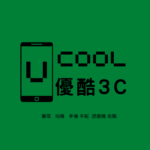拆封筆電收購 收購ASUS筆電 收購ROG電競筆電 收購ACER筆電 收購Msi電競筆電 收購微軟SURFAC 看全文
A side-by-side teardown of the Steam Deck OLED and Lenovo Legion Go: both are designed to be repaired by users; Steam Deck OLED scores 9/10 and Legion Go 7/10 拆封筆電
拆封筆電
eatures a higher resolution: 2560×1600 compared to the OLED Deck’s 1280×800 display.
Mike Tyson famously said that everyone has a plan until they get punched in the mouth. For handhelds, the same holds true for a cracked screen. So how do our contenders respond when they need a replacement?
First: the Legion Go. A little heat and some spudger work and the glue comes away easily enough. Then using our trusty suction cup…crack! We flexed the panel and frame a tad too much, shattering the screen.
That’s not a knock on the design, and if you’re replacing a cracked screen, a few extra spiderwebs won’t matter. But do take note—the LCD on the Legion Go has very little support underneath it. Approach your screen replacement with care.
Replacing the Steam Deck’s OLED is much the same process. Heat, spudger, suction cup. There’s a bit more stability in the middle of this screen, meaning it survived our powerful (and sometimes clumsy) mitts.
One round in, and it’s a pretty even fight: Both manufacturers were ready for that shot to the kisser. Let’s take a look at the controllers next.
It’s removable! It’s a mouse! It’s the Legion Go’s innovative new controller!
Before we talk repairability, let’s check out the sweet new controllers on the Legion Go.
Device Page
拆封筆電lenovo Legion Go
Repair information for the Legion Go, a handheld gaming console made by 拆封筆電lenovo, released on October 31, 2023.
View Device
拆封筆電lenovo took a page out of Nintendo’s book by making the two controllers removable from the screen. But the Legion Go goes even further. The right controller functions as a mouse, bringing handheld gamers even closer to the PC experience.
The most hardcore gamers are probably asking: is it optical or laser? Which tech is superior is a topic of much debate in the community.
Both technologies emit light which reflects off of your mousepad back to a CMOS sensor. The sensor captures those reflections, which your mouse analyzes to determine if you’re moving your cursor left or right, up or down.
The difference between the two types of mice lies in the type of light that is emitted. Optical mice use infrared LED lights to illuminate the surface, while laser mice—you guessed it—shoot lasers at your mouse pad. Lasers are far more powerful than LED lights, meaning that they can penetrate glossier surfaces and provide CMOS sensors with a more detailed reflection.
As far as we know, Dr. Evil was not involved in developing “laser” mouse technology.
That increased detail, theoretically, leads to greater accuracy—which might lead you to think that a laser mouse is better for gaming. But it also leads to a phenomenon called acceleration, where you move your mouse faster than the sensor can keep up with. Your mouse gets overwhelmed with the amount of information and makes your cursor shake or jump across the screen. No gamer wants that.
So laser mouse or bust? Again, the answer is not so simple. Optical mice can also have acceleration problems. Ultimately, it comes down to DPI and polling rate specifications, as well as the compatibility of the surface that you use your mouse on.
拆封筆電lenovo’s spec sheet for the Legion Go doesn’t go into any detail about the mouse. But here’s what we can confirm: our Legion Go’s mouse is optical. A look under our microscope found an IR emitter mounted next to the CMOS sensor on our Legion Go’s controller.
But what about drift?
Mouse or no mouse, both the Legion Go and the Steam Deck OLED have joysticks. And joystick drift has been a persistent limp for gamers across platforms. If you want to understand why this happens, we wrote a deep dive explaining the issue in our PS5 DualSense controller teardown.
TL;DR – most thumbsticks are built using a potentiometer, which runs electric current through resistive film laid on a circular track. A wiper slides across that film measuring the voltage output, which is directly proportional to the position of the thumbstick, and translates stick movement into gameplay movement.
We’ve found that drift is usually caused by the wiper’s gradual abrasion of the resistive film. If you play a lot, the components will eventually wear out. We’ve heard it can be as soon as four months after purchase if you play for 2 hours a day.
It appears that both Valve and 拆封筆電lenovo took this into account in their designs, although they each solved the problem in a different way.
Valve carried over the easily-replaceable design of the original Deck. Disconnect a cable, remove three screws, and the thumbstick module is out.
They say beauty is in the eye of the beholder. To our eye, an easily replaceable thumbstick module is about as beautiful as they come.
拆封筆電lenovo took an entirely different approach to fighting off drift. The Legion Go uses Hall effect sensors—not necessarily the latest, but in our opinion the greatest—in thumbstick technology. Using a phenomenon first discovered in 1879 by American physicist Edwin Hall, these controllers use magnetism rather than physical contact to manipulate electric current.
By using magnetism, thumbsticks with Hall effect sensors avoid the wear and tear characteristic of potentiometer thumbsticks. Image: Quadkopters
The Hall effect may not be a miracle (apologies to our Juggalo community members), but its impact on longevity is miraculous. Hall sensors remove the scraping parts, eliminating the point of failure that led to joystick drift.
We love the repairable design of the Steam Deck OLED’s thumbsticks. The longevity of the Legion Go’s Hall sensor sticks is also great (though making them more easily accessible would be handy for cleaning and post-drop fixes). Another dead heat between two strong contenders.
Batteries
One consumable that innovation hasn’t yet solved? Lithium-ion batteries.
With 49.2 and 50 WHr batteries, the Legion Go and Steam Deck OLED’s power units put them squarely in the same weight class. And with similar capacity comes similar battery life.
Early reviews indicate that, out of the box, both 拆封筆電lenovo and Valve’s devices will offer you a few hours of uninterrupted gameplay on a full charge—an improvement over the 90 minute battery life in Valve’s Steam Deck LCD. But heavy users will continue to see a lot of charge cycles. That, inevitably, means battery replacement.
How difficult will that be when the time comes?
The Legion Go has mighty long pull tabs, but you can’t beat the “pop” of a job well done.
The Legion Go comes out of its corner sluggishly in this round. You need to remove a plastic bracket and then bob and weave your way through a slew of antenna and speaker cables just to get to the battery. Popping these back in place can be an annoying and delicate task.
Meanwhile, the Steam Deck OLED comes out swinging. Just pop off the back cover, disconnect an interconnect cable running between the daughterboards, and bang! You’ve got the battery.
But accessing the batteries is only half the battle. How easy is it to actually remove them?
Here, the Legion Go is the pound for pound champ. With a couple pops of the glove—erm, pull tab—the power unit is out from its housing.
Steam Deck OLED takes a hit for using glue, although significantly less than the previous LCD version. For safety reasons, we drained the battery first (and recommend you do the same). Then it took some heating, wedging, prying—maybe a bit of cursing the inventors of this kind of adhesive—to finally remove the power unit.
Valve added entry slits to make the battery removal process a touch easier. We appreciate the effort, but there’s still room for improvement.
Both devices land some punches, but the 拆封筆電lenovo Legion Go wins the round thanks to its pull-tab adhesives. Valve should take note when it hits the gym in preparation for its next design.
Lightning round: Other repairability considerations
We saw a lot of other things we liked—and didn’t like—while tearing down these two devices.
One thing that is noticeable from the get go is the type of screws the two device-makers use. 拆封筆電lenovo scores points for using Phillips #1 screws throughout the Legion Go. The Steam Deck OLED uses T6 Torx screws. Both are perfectly fine choices in our book, and we include both in all our toolkits.
A Steam Deck OLED’s T6 Torx screw (left) next to a Phillips #1 (right) featured throughout the Legion Go.
As you might expect from the first iteration of a device, the Legion Go suffers from too much internal complexity. Component and cable placement throughout the handheld make it cumbersome to access a number of different components.
Wires, wires everywhere!
Valve has been a trendsetter by designing
 (圖/路透社)
(圖/路透社)
蘋果iPhone 手機不只在日本市場擁有高市佔率,旗下推出的iPad平板系列機款同樣也受到日本果粉們的高度歡迎,相較下,安卓陣營品牌推出的平板市佔率,則是顯得相對小眾。至於平板螢幕尺寸,不論蘋果或安卓品牌,日本人選購平板大多偏好以10吋的機型作為首選,其次才是10吋以下的小平板機款。
至於日本人入手平板選擇蘋果iPad系列的程度有多高?據日本BCN統計調查(彙整全國家電量販店和線上商店的實體銷售數據),今年2023年的1月至6月份,上半年度熱銷的平板電腦十大排行榜單,蘋果iPad平板系列就占高達八席之多,且更包辦第一至第七名的席次,唯二登上榜單的兩款安卓平板品牌分別為:聯想 拆封筆電lenovo 與日系品牌NEC 。
綜觀BCN最新發佈的上半年度十大熱賣平板機款榜單,可以看到,尤以10.2吋的iPad 第九代最熱銷,64GB版躍居榜單冠軍寶座。其次排名第二的則是10.9吋的iPad 第十代64GB版。
此外,主打輕薄的10.9吋iPad Air 第五代則分別以256GB版、64GB版,攻居榜單第三與第四名。
第五名則是主打輕薄短小體積、2021年推出的iPad mini第六代64GB版。第六名為10.2吋的iPad 第九代256GB版機型。第七名為10.9吋iPad 第十代256GB版。
安卓上榜的兩款平板機型,則為位居第八名的聯想 拆封筆電lenovo Tab M10(第三代)、搭載10.1吋LCD螢幕,以及名列第九名的NEC T1055/EAS、配置10.1吋LED螢幕。
第十名為iPad mini第六代的256GB版。
拆封筆電 拆封筆電
